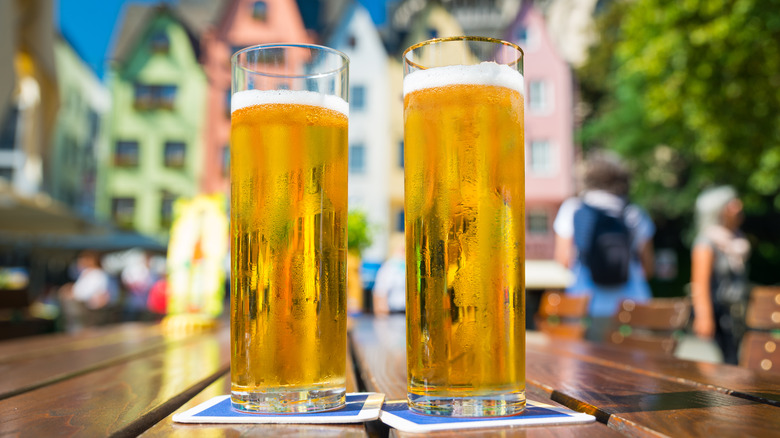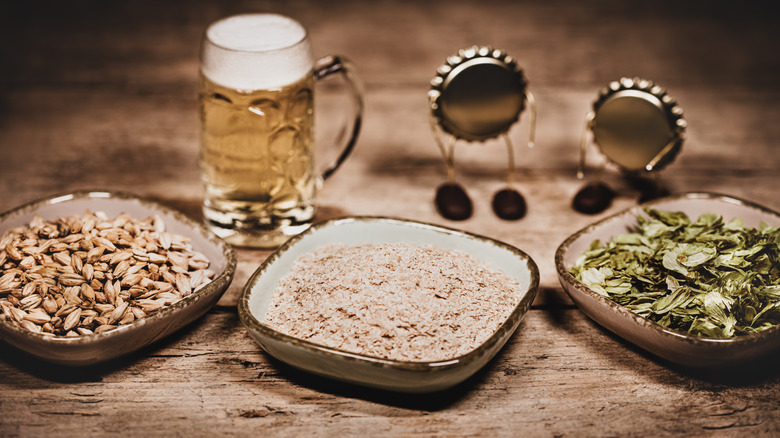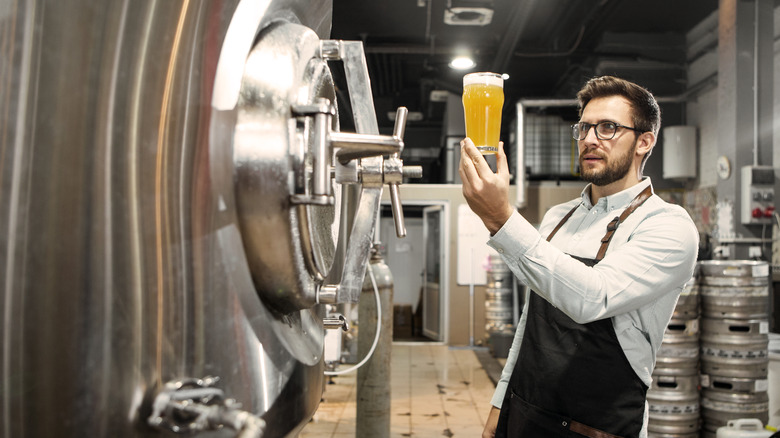What Makes Kölsch Beers Different From Pilsners?
The light, crisp snap that tickles the taste buds when sipping on a Kölsch beer would have many think it's a variety of pilsner, but they would be wrong. Both share a similar muted golden color and a picturesque white head, but each brew's taste compares only in their crisp aftertastes. Pilsners have a refreshing, malty flavor profile, while Kölsch beers maintain a smooth, creamy front flavor with a light body that carries fruity notes.
Whereas pilsners originated in the city of Plzeň (Pilsen) in the Czech Republic in 1842, Kölsch didn't arrive on the beer scene until 1918. A true Kölsch can only be located around the German city of Köln – spelled Cologne in English. There are plenty of American versions of Kölsch, but they are typically labeled "German-style Kölsch" or "Kölsch-style beer." This is the brewery's subtle way of conceding that their brew is not an authentic Kölsch.
A pilsner is technically a lager, and a Kölsch is considered an ale, but with a twist. The key difference between a pilsner and a Kölsch is what yeasts they are brewed with. While lagers utilize bottom-fermenting yeasts at cooler temperatures that result in a lighter taste, ales are made with top-fermenting yeasts at high temperatures, lending a more robust flavor to the beer. However, despite being categorized as an ale, Kölsch isn't brewed quite like a traditional ale.
Brewing standards for Kölsch beer
After the beer's popularity grew in the 1960s, German brewers came together at the Kölsch Konvention in the 1980s to agree on what defines a Kölsch. Germans make beer according to a centuries-old beer purity law called Reinheitsgebot. These standards dictate that only a few ingredients can be used to make beer: hops, barley, yeast, and water. At the Kölsch Konvention, brewers decided that further criteria would define what an authentic Kölsch is. Only if it is a top-fermented, pale, filtered ale with hop accents can it be a true Kölsch. It must also have a gravity between 11 and 14 on the Plato scale — a method of measuring how much alcohol will potentially be in the end product. This means a bona fide Kölsch will always have a low to medium ABV.
Kölsch beers are made with noble hops, a light pilsner malt, and ale yeast that is top-fermented at higher temperatures. But the brew is completed by letting it ferment at colder temperatures like a pilsner lager, which gives it its crisp, dry finish when drinking it. This gives some the impression that it is a hybrid beer, but simply because it's finished at colder temperatures doesn't mean it's a hybrid — it's just a very unique beer. The yeast used to make it defines what it is, so Kölsch is an ale — a lagered ale, but an ale nonetheless.
Are American versions authentic Kölsch beers?
Just as a popped bottle of Champagne comes from a specific region of France, genuine Kölsch beer must be brewed within 50 kilometers of Köln, as decided at the 1997 Kölsch Konvention. American breweries are obviously not within that range, but they also hold no loyalty to Reinheitsgebot, meaning varieties in the U.S. aren't really Kölsch. Pilsners are the same in this regard because although produced in the Czech Republic – where people drink more beer than anywhere else in the world — proper pilsner lagers are also beholden to the beer purity law. As with American pilsners, brewers of Kölsch in the States take liberties in the brewing process compared to how they're made in Köln.
A traditional Kölsch tastes slightly hoppy with notes of fruit, like grape and pear, and has a crisp, malty finish. Some American varieties have similar flavor profiles, such as 2nd Shift Kölsch. Instead of noble hops, brewers use Saaz, known for imparting floral and citrus flavors to a brew. The flavor profile differs from a true Kölsch, but it's close. Other brewers take a wider berth with the definition of a Kölsch. Upslope Brewing Co. makes a version with Lemondrop and Mosaic hops that imbues the beer with notes of honey and sage. Though decidedly not an authentic Kölsch, it does use ale yeast in the fermenting process, so by American standards, it's close enough.


